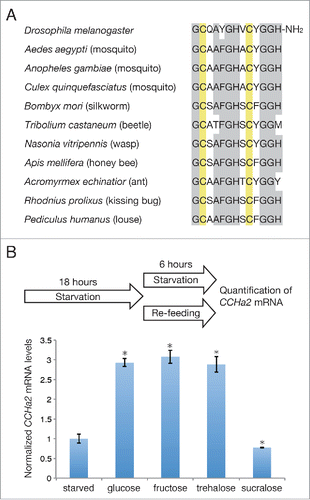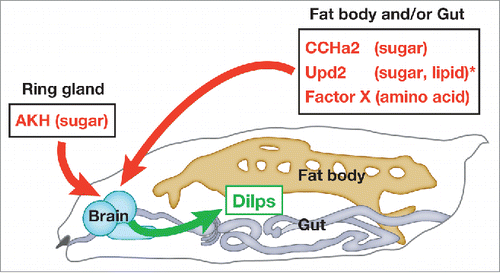Figures & data
Figure 1. (A) Alignment of CCHa2 sequences in the indicated insect species. Conserved amino acids and bisulfide-bonded cysteine residues are highlighted in gray and yellow, respectively. (B) Effects of sugars on CCHa2 expression. Larvae were starved for 18 h, and then either further starved or re-fed with the indicated sugars for 6 h. Glucose, fructose, and trehalose, but not sucralose induced CCHa2 expression. *P < 0.05.

Figure 2. Periphery-to-brain signaling involved in Dilp regulation during larval development. Dilps are regulated by multiple signals that respond to the presence of different nutrients. CCHa2, Upd2, and an as-yet unidentified factor(s) expressed in the fat body and/or gut, and Adipokinetic hormone (AKH) produced in the ring gland positively regulate the synthesis and/or secretion of Dilps. *The nutrient sensitivity of Upd2 has only been determined in adults.

